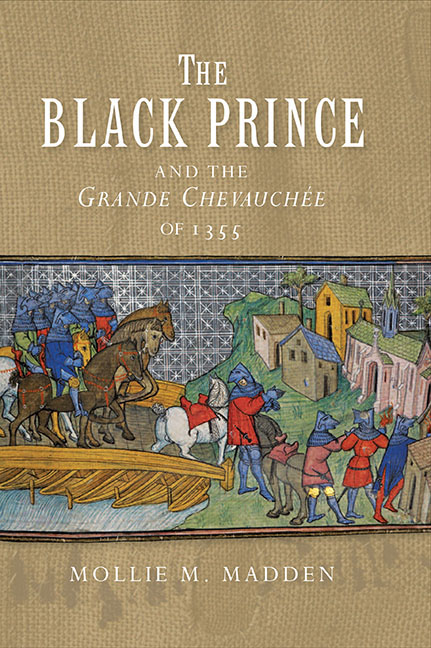Book contents
- Frontmatter
- Dedication
- Contents
- List of Illustrations
- Acknowledgements
- List of Abbreviations
- A Note on Measurements
- Map
- Introduction
- 1 The Preparations for the Chevauchée: England's Existing System of Purveyance
- 2 A Competent Military Force: England's Existing System of Recruitment
- 3 The Campaign to Narbonne: An Efficient System of Supply
- 4 The Return to Bordeaux: A Test of Endurance
- 5 After the Campaign
- Conclusion
- Appendix 1 Ships of the Prince's Fleet
- Appendix 2 Edward of Woodstock's Army
- Appendix 3 The Prince's March
- Appendix 4 Financial Tables
- Bibliography
- Index
- Warfare in History
- Frontmatter
- Dedication
- Contents
- List of Illustrations
- Acknowledgements
- List of Abbreviations
- A Note on Measurements
- Map
- Introduction
- 1 The Preparations for the Chevauchée: England's Existing System of Purveyance
- 2 A Competent Military Force: England's Existing System of Recruitment
- 3 The Campaign to Narbonne: An Efficient System of Supply
- 4 The Return to Bordeaux: A Test of Endurance
- 5 After the Campaign
- Conclusion
- Appendix 1 Ships of the Prince's Fleet
- Appendix 2 Edward of Woodstock's Army
- Appendix 3 The Prince's March
- Appendix 4 Financial Tables
- Bibliography
- Index
- Warfare in History
Summary
When the Prince and his forces set out on 4 August 1356 on the Poitiers campaign, he and the army had the success of 1355 to build upon. And the 1355 chevauchée was, in the estimation of the English anyway, a success. The Anglo-Gascon army had marched 606 miles (975km) from Bordeaux to Narbonne and back again in fifty-nine days with minimal logistical difficulties. It had crossed the Garonne river and carried the war to parts of France that had not seen war for some time, destroyed towns, infrastructure and economic resources, and returned to Bordeaux laden with booty and records. The logistics of the Anglo-Gascon army were up to the task, even when faced with long and arduous marches, some of which had little available water along the way. No great losses were reported. While an additional 600 archers were recruited in early 1356, there is no real way to know how many men were lost. A number of horses undoubtedly perished, and Baker notes more than one march that resulted in the loss of a number of horses. Despite that difficulty – the loss of some horses was no doubt anticipated – the army's progress was not slowed, which is further evidence of the organization and excellent advance planning of the campaign. The planning and the organized system of supply during the campaign enabled the Prince to succeed in his first solo command and to achieve the stated goals of the expedition with no significant losses.
According to the documentary evidence, the intended outcomes of this campaign were to punish the count of Armagnac, to aid the Gascons in their struggle against Armagnac and the French crown, and to extend the reach of the English crown in France through retaking lands lost to Armagnac, convincing those Gascons whose loyalties were wavering that their best interests lay with England and winning new allies. Following the conclusion of the campaign, the Prince's and Wingfield's letters claim success based on these criteria: they had reclaimed lands, punished rebels, disrupted France's ability to fight against the English and persuaded some Gascons lords to return to their allegiance to Edward III. The campaign itself backs their words: The stated goals were more than rhetorical cover for plundering.
- Type
- Chapter
- Information
- The Black Prince and the Grande Chevauchée of 1355 , pp. 193 - 196Publisher: Boydell & BrewerPrint publication year: 2018

